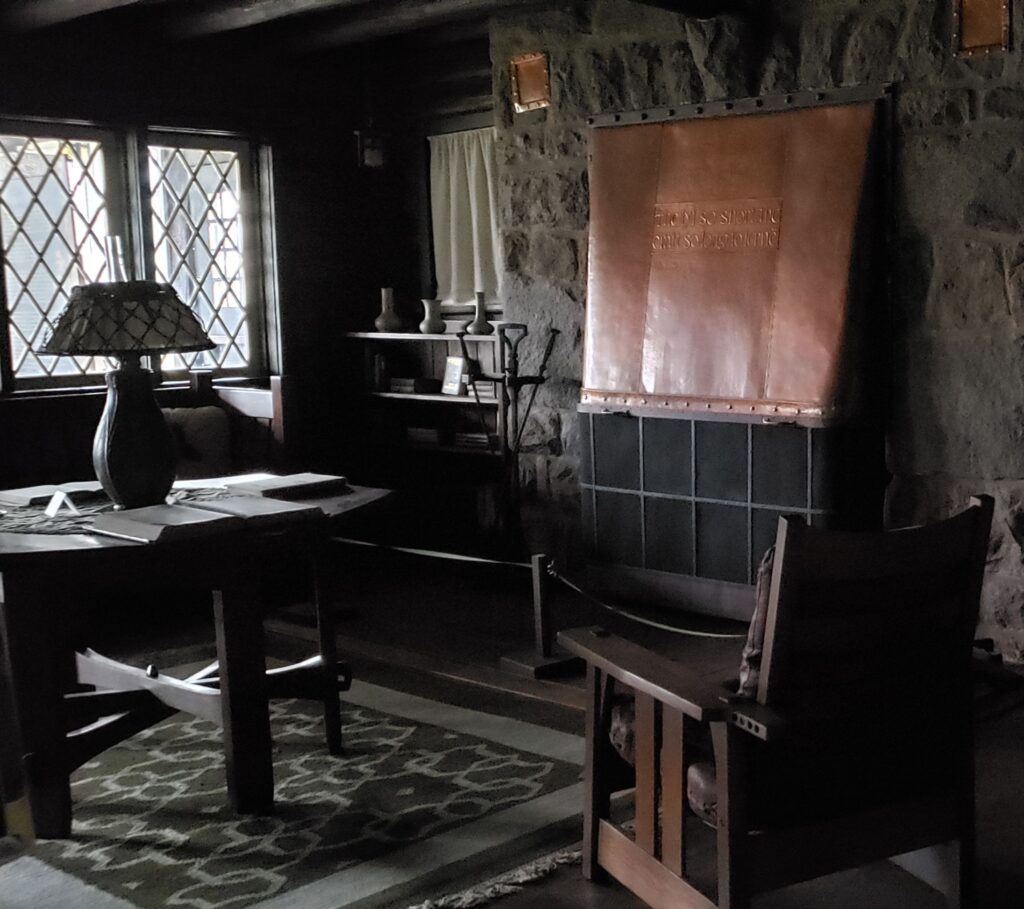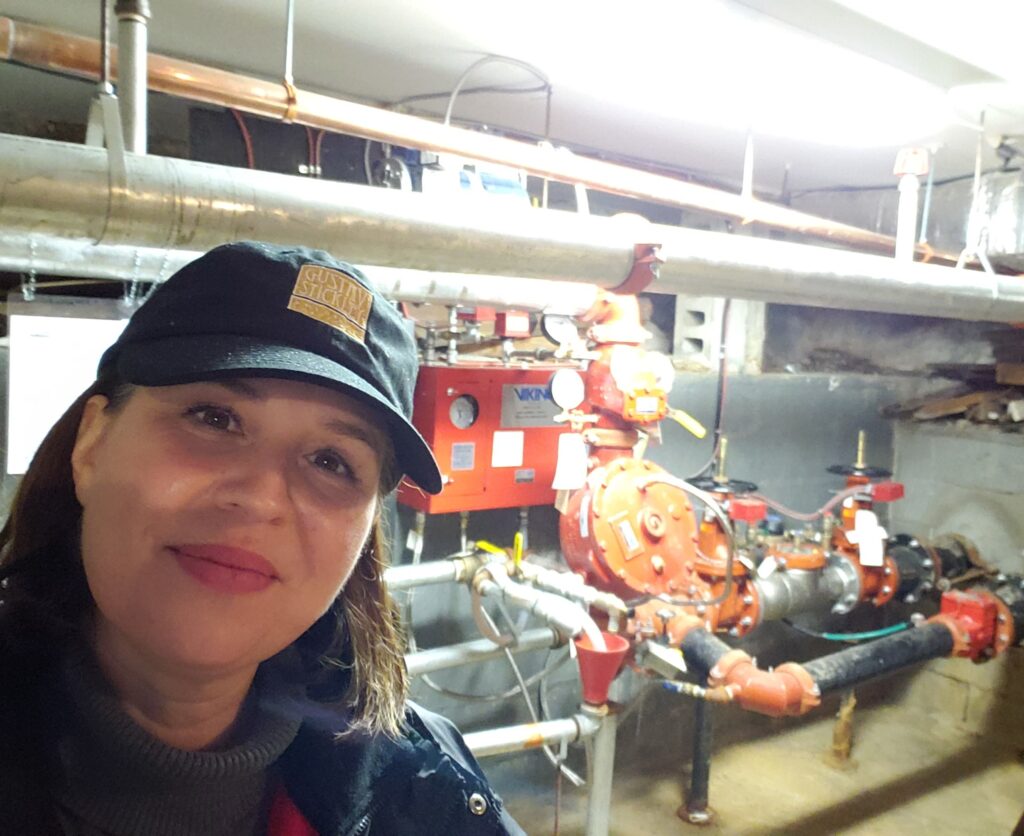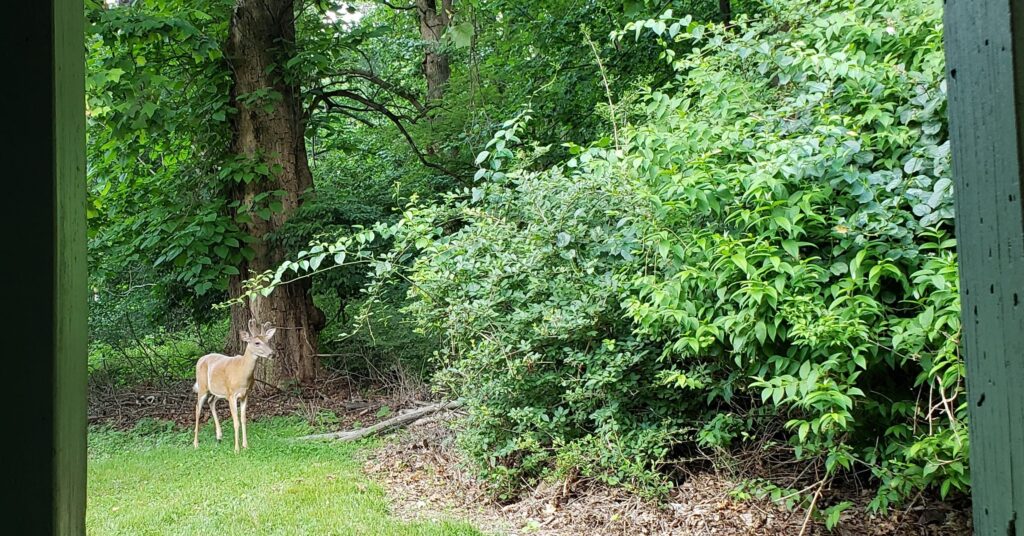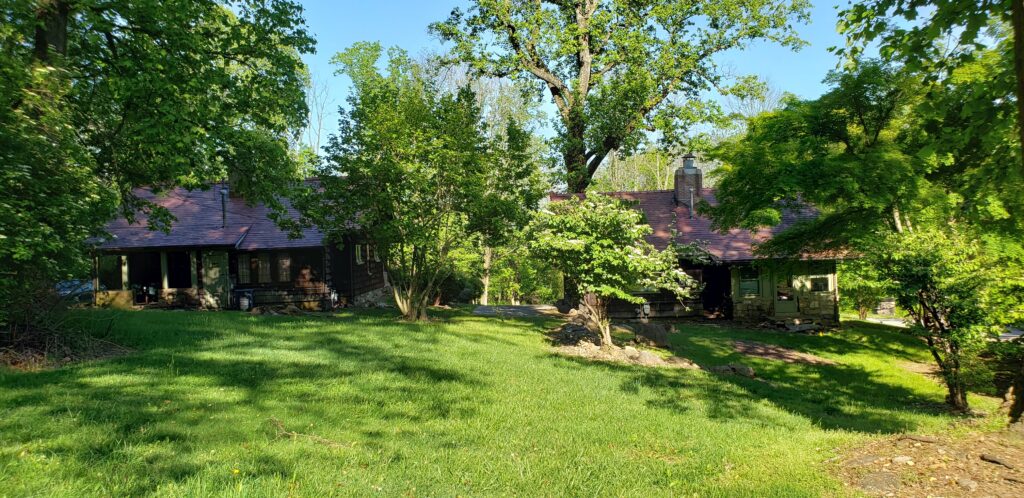From the Director’s Chair: Fall For Stickley, Part 1
by Vonda K. Givens, Executive Director
Aside from being a seasonal play on words, I see the museum’s “Fall for Stickley” program series as an invitation to become acquainted, and possibly even enamored, with this property and the vision of its founder, Gustav Stickley. Authentic, peaceful places like Craftsman Farms feed and renew the spirit. Even for fans who are only able to experience the property in pictures, its very existence can be affirming. I understand this. For me, the ideas around which Craftsman Farms was established have been as affirming as the place itself.

The Log House was closed for tours in March. 
A selfie in front of the fire suppression system in the basement of the Log House.
Over the past few months, I have often reflected on Stickley’s vision of home as a sanctuary and his intention for Craftsman Farms to manifest this idea. Throughout the pandemic, with the museum closed for tours, most of our staff has been working remotely. Because my job is easier to do onsite, I have been working here regularly, often by myself. I have spent so much time alone that I have, at times, referred to Craftsman Farms as a “Craftsman ghost town.” I have missed the camaraderie of our staff. I have missed the smiles and stories of our volunteers, and I have missed the enthusiasm of visitors, but spending time alone on the property also has been instructive and even edifying.
Before 2020, over my twelve years on the staff, I had spent countless hours at Craftsman Farms, but that time was spent mostly with other people. One of the biggest surprises of this year has been the fresh perspective time alone at Craftsman Farms has given me. I don’t know if this is an aphorism or not, but here’s a truth I’ve learned: If you really want to know a place, experience it by yourself.

On a solo walk across Craftsman Farms, the Log House, which Stickley described as its “permanent center,” seems to be a beacon, perpetually drawing your gaze. Inside, it has all of the amusing creaks and tics of an old house—and in the stillness, its sights, sounds and smells are more pronounced—with the multi-system complexities of a modern historic house museum. This combination gives a distinct presence and daily rhythm to the Log House.
In the summer, I often worked with my laptop on the back porch of the North Cottage (see below at left). I learned that it stays cool, even in July, and while the cottage interior can provide relief from the humidity, the dim lighting inside is far better suited to napping (not a confession, just an observation) than working. During mornings on the porch, I became familiar with the sound of the birds in the foliage around the property’s former vineyard. In the evenings, as the song of the crickets and the pond’s frogs took over, I came to know the families of deer and watched the fawns as they grew in in size and confidence, bounding around the grounds. I also came to know the family of groundhogs who have taken up residence outside the cottage (we have had stern words about their presence, but that is a story for another time).

When Tropical Storm Isaias slammed through the property on August 4 it was deeply unsettling. The storm uprooted a massive, healthy tulip poplar, which fell onto the Annex connected to the Log House and spread branches and debris to every corner of the property. In an instance, the familiar pastoral peace of Craftsman Farms was disrupted and forever changed. …